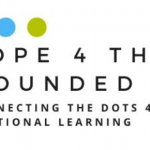Exclusion is NOT Intervention
Written by: Kelly Storms, Gateway Academy Director, NLCS
As I began working to build a program that would offer different avenues for our district’s students in need of supports, one phrase continuously came to mind, “Exclusion is not intervention”. During the National Youth at Risk Conference, I heard this phrase for the first time. I could not let it go and have referred to it often, using it as I address our school administrators, my school board of directors, and community leaders. Initially, the phrase simply meant, “Let’s stop suspending and expelling students and find a way to keep them in school”. My superintendent had stated to me on several occasions that he was concerned and shocked at the number of expulsions he was signing and wanted to explore a way to minimize this number. After all, expulsions tend to translate into a decreased graduation rate and this is extremely important factor for school districts and for community. The immediate answer was an alternative program where students could serve suspension and expulsion time away from their school campus, but maintain a structured school day and continue to earn credits. This took very little time and planning to formulate. What has developed since then and what I have come to understand at a much deeper level about exclusion is what is most important.
I have learned that I have a ”lane”, as do my staff, and it is to the benefit of our students that we stay in our lanes. We are not doctors, therapists, or counselors. We do have the ability however to determine when such supports are needed and can do two things in response to this knowledge. First, we can step back, understand that we may just not understand, and put our student in touch with the proper resources via appropriate channels. Secondly, we can exercise patience knowing that our top priority, academic success, is going to take some time. This brings back the idea of exclusion. When there is a lack of patience or perhaps no alternative approach for youth in need, there is often a quick response to exclude in some fashion. This creates a vicious cycle for the youth. Excluding from school may also prolong or prevent the response needed to provide outside supports that school personnel could have helped the youth or parents initiate. Professor of Child and Adolescent Psychiatry, Tamsin Ford said; “This research provides further evidence that poor mental health may be both cause and effect of exclusion from school. These children are often facing a wide range of challenges, and need both education and mental health practitioners to act quickly and effectively to prevent exclusion and improve both educational and health outcomes in later life.”
School administrators must begin to understand the effects of school exclusion. We must strive to meet the challenge of finding ways to assist students in need while they are under our daily care and supervision. A gradual refocus on academics can begin without ever leaving the learning environment, the educator support, or losing touch with the daily routine of attending school. Of course, there will be times that an administrator determines it necessary to remove a student from a class, sport or club, or even the campus for a brief time. However, being mindful that exclusion most likely will have a lasting negative impact on the child and may even have a negative community impact could encourage us to assist at risk students in ways not previously attempted. Every school administrator that takes the time to empower his/her staff to reach out to at risk students while staying in their lane, has the potential to create far reaching systemic change.
So who are the excluded? It is important to note here that student exclusion can be a result of direction by authority, by choice, or even indirectly without knowledge of it even happening. Students at risk and beyond have no specific appearance or standard exhibition of behavior. Many students in need of emotional supports are achieving academically and appear to be fine on the surface. Many simply do not know how to articulate what they are feeling or who to reach out to for help. Imagine those youth with an adult to approach that could advocate for needed resources. My guess is that those students now have a better chance to achieve more, be involved greater socially, and be an overall happier youth. We must be mindful that the best achieving students might achieve even more given the needed emotional support. Consider also that the expelled student may very well have stayed engaged and become academically successful provided emotional supports and effective interventions. Building relationships and knowing our students is the first step to identifying those that need us to help. They do not need us to be everything but rather to advocate for them so that they might receive more than the traditional education process is providing. School personnel are so very important in the lives of our youth. Excellent instruction is very important, but being a teacher goes beyond content knowledge, especially in today’s world.
Providing programs that will allow educators to take risks, try something new, or make appropriate allowances for our students in need, opens doors. Establishing partnerships with community agencies, business, and service providers can result in countless opportunities for all stakeholders. These are new opportunities for students and staff to work alongside one another in search of success. Success such as : academic achievement, increased student attendance, decreased student dropout rates, decreased suspensions and expulsions, increased self-esteem, increased student emotional quotient (EQ), increased employment rates, and decreased prison rates (Hendershott, J., Reaching the Wounded Students; 2009)
The more informed I become about at risk youth, the clearer it becomes just how impactful our education system could become simply by acknowledging this group in a culturally responsive manner. One definition of culture is; “the integrated pattern of human knowledge, belief, and behavior, that depends upon the capacity for learning and transmitting knowledge to succeeding generations (Merriam-Webster Dictionary, 2008). If we think of those students in need of emotional supports as simply a sub-culture within our schools and we pledge to be a culturally responsive leader we all win. Empowering our teachers to be patient with what needs to happen emotionally so that gradually academic achievement can take place should be a school administrator’s professional obligation. I recently heard Dr. Dennisha Murff state when describing the Culturally Responsive Leader; “The journey starts with me. Accountability measures do not counter personal biases.” While she was addressing the topic of racial bias, this could also easily be applied to our students less engaged, exhibiting concerning behaviors, or having poor attendance. The point in which I am arriving is that, when we change our approach to meet the needs of the student culture there is a greater chance for overall success. When you meet the child where they are in that moment and then are able to guide and encourage them to a point of success, a lot of stuff takes place on that journey. The results of that journey are personal for the youth, their family, and the future generations that they will positively influence because they had success, found a better emotional state, or were just able to approach the world with greater confidence and self-esteem. Imagine the wounded youth, once seriously at risk and defeated, now a confident parent and the impact that has on their children. Think of the community. Better attendance rates, greater student engagement, and increased graduation rates mean a community with less crime and greater employability.
Our communities need us, the educators, to provide options that allow for greater student success. By immersing our students in what they need, rather than excluding them from what in the present moment may seem unmanageable or simply not working, we all win. Consider any one of the following for your school:
- Providing an environment that offers patience with academic progress and advocates for emotional supports and healing
- Offering coursework in which the student can have some choice and ownership, perhaps working at their own pace while they are addressing emotional needs
- Provide a program that allows for continuing coursework and receiving counseling services as an alternative to out of school suspension or expulsion
- Provide outlets such as physical fitness time
- Offer opportunities for community service to build self-esteem and grow a sense of belonging
Taking time to find even one way to change the current educational environment to reduce exclusion, mandated, by choice, or occurring indirectly, will reap great rewards.
You can also listen to Kelly on the IASP LeaderCast as she talks about interventions.




